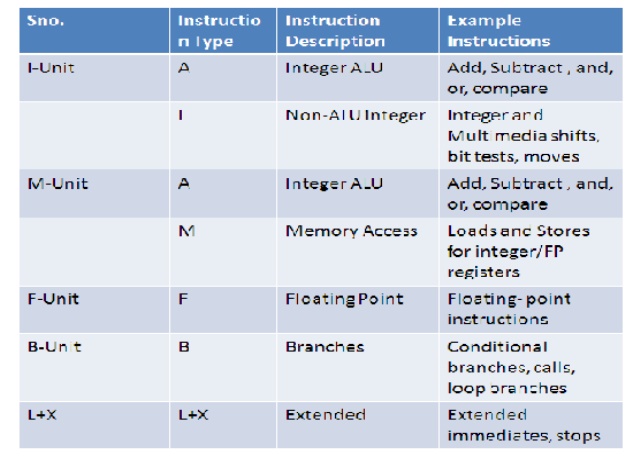Chapter: Advanced Computer Architecture : Multiple Issue Processors
IA-64 Architecture
IA-64 ARCHITECTURE
It is a
RISC-style, register-register instruction set architecture. Designed to support
compiler-based exploitation of ILP.
1. COMPONENTS OF IA-64 REGISTER
STATE
128
64-Bit
general purpose registers
128
82-Bit floating-point register (provides 2 extra bits over std. 80-bit IEEE
format)
64
1-Bit predicate registers
8
64-Bit branch registers, used for indirect branches
Various
registers used for system control, memory mapping, performance
counters, etc.
2. REGISTER MECHANISM
0-31 → Accessible
Registers
32-128 → Used
as a register stack
CFM → Set of registers to
be used by a given procedure. (Current FraMe
Point)
Integer
register
Floating
point register
Predicate
register
3. REGISTER
A frame
is created for a called procedure, by renaming the registers in hardware.
Ø Frame has local area and output area parts.
Ø The
“alloc” instruction specifies the size of these areas.
To handle
the over flow of the register stack,
special h/w called the register stack engine
is used.
4. INSTRUCTION FORMAT
Ø Supports
for both Explicit Parallelism and Implicit Parallelism
Ø Benefits
of VLIW approach-implicit parallelism among operations in an instruction and
fixed formatting of the operation fields.
Ø It can be
achieved by relying on the compiler to detect ILP and schedule instructions
into parallel instruction slots.
5. FIVE EXECUTION UNIT SLOTS

6. BENEFITS OF IA-64
1) Implicit parallelism
Ø By
placing instructions into instruction groups
2) Ease of
Instruction decode
Ø By bundle
3) Predication
4) Speculation
5) Memory
Reference
7. Instruction Group:
Ø It is a
sequence of consecutive instructions with no register data dependences among
them.
Ø If
sufficient hardware resources existed and if any dependences through memory
were preserved, then all the instructions in a group could be executed in
parallel.
8. Bundles
Each
bundle consists of a 5-bit template field and three instructions, each 41 bits
in length. Template field specifies what types of execution units each
instruction in the bundle requires.
9. Predication
Ø An
instruction is predicated by a predicate register, whose identity is placed in
the lower 6 bits of each instruction field.
Ø Predicate
registers are the set using compare and test instructions
Ø It allows
multiple comparisons to be done in one instruction.
10. Speculation:
Ø It
supports for control speculation
Ø That is
deals with deferring exception for speculated instruction, memory reference
speculation and thus supports speculation of load instructions.
11. Memory reference
Ø It uses
the concept of advanced loads
Ø Advanced
load is a load that has been speculatively moved above store instructions on
which it is potentially dependent
Ø The instruction
ld.a is used for advanced load, which is to speculatively perform a load.
Ø Execution
creates an entry called ALAT (Advanced Load Address Table).
Ø ALAT
stores both the register destination of the load and the address of the
accessed memory location.
Ø When a
store is executed, an associative lookup against the active ALAT entries is
performed.
Related Topics